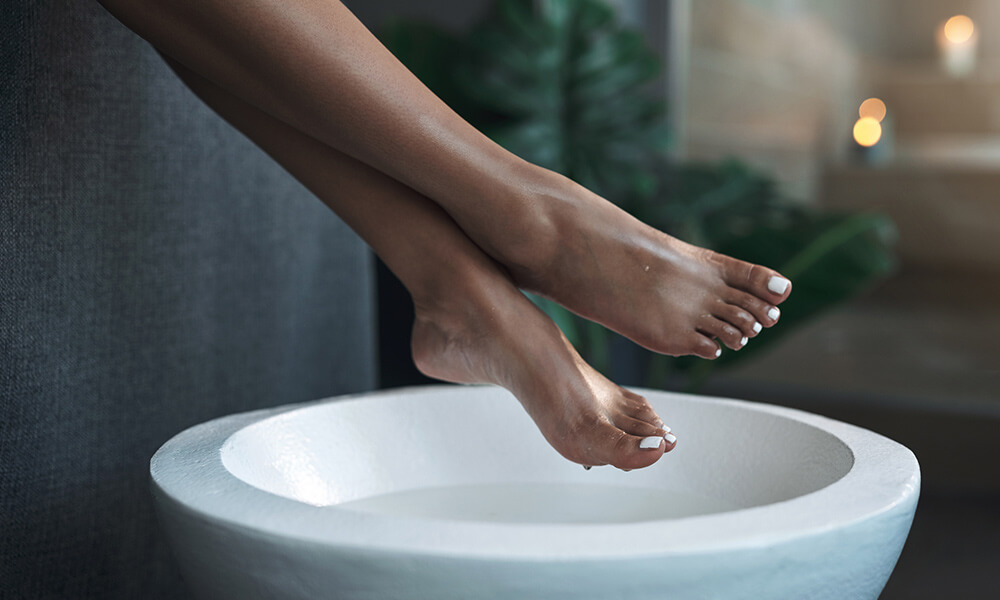What kind of doctor treats Morton’s Neuroma?

Morton’s neuroma is a painful foot condition characterized by a burning sensation or numbness between the toes. It may even feel like a pebble stuck under the ball of your foot. Foot neuromas can make everyday tasks like walking or standing quite uncomfortable. In good news, Morton’s neuroma is highly treatable with a skilled podiatrist on your side.
In this article, the experts at Morton’s Neuroma Center take a deep dive into the issue of Morton’s Neuroma, including what it is, its most common causes, how it is diagnosed, and the numerous options available for treatment of the condition.
What is Morton’s Neuroma?
Morton’s neuroma is a common foot problem caused by thickened tissue surrounding any of the nerves leading to the toes. It frequently develops due to irritation or overuse of the digital nerve from improper footwear, injuries, deformities, or repeated flexion of metatarsophalangeal joints that make up the ball of the foot.
What causes Morton’s Neuroma?
Morton’s neuroma often results from sports injuries, trauma, or foot deformities. Fashion footwear can also irritate the digital nerve. Patients regularly wearing high heels or shoes with a narrow toe box are more prone to develop the condition.
Top Causes of Morton’s Neuroma
- Athletic activity
- Congenital foot deformities
- High heels or pointed-toe shoes
How do I know if I have Morton’s Neuroma?
Sharp pain, numbness, or a pins-and-needles sensation may be symptomatic of swelling or irritation of the nerves between the third and fourth metatarsals, the longest bones in the feet.
People living with Morton’s neuroma often complain of a burning pain on the ball of the foot, a persistent feeling of something being stuck in their shoe, or stinging or tingling in the affected toes. Not all symptoms need to be present.
Morton’s Neuroma Symptoms
- Ball-of-foot pain
- Toe pain, burning, tingling, or numbness
- Discomfort during walking, running, or standing
- Feeling like a rock is stuck to the ball of the foot
What kind of doctor treats Morton’s Neuroma?
If you have foot pain, burning, or discomfort, you should seek care from a podiatrist. Podiatric medicine is a medical specialty devoted to diagnosing and treating foot disorders. As foot doctors, podiatrists help patients resolve the painful symptoms associated with Morton’s neuroma and various other foot problems, including corns, calluses, ingrown nails, bunions, flat feet, plantar fasciitis, athletes foot, stress fractures, and foot deformities.
How is Morton’s Neuroma diagnosed?
A diagnosis of Morton’s neuroma begins with a physical examination. Your podiatrist may press on the ball of your feet to locate any tender spots or unusual masses. Some patients may hear or feel a clicking sensation between the metatarsal bones.
Morton’s neuroma is not always obvious. If a foot exam is inconclusive, your doctor may order diagnostics tests such as x-rays, ultrasound imaging, or an MRI to visualize the digital nerves or rule out other causes.
Diagnosing Foot Problems
- X-rays
- Ultrasound imaging
- Physical examination
- Magnetic resonance imaging (MRI)
How is Morton’s Neuroma treated?
Treatment for Morton’s neuroma will depend on your clinical presentation and the severity of your symptoms. Your podiatrist will likely recommend conservative approaches before resorting to more invasive options like surgery.
Home Remedies for Morton’s Neuroma
Patients may be able to manage neuroma pain by following some of the following guidelines:
- Rest your feet
- Wear properly fitting shoes
- Use a frozen water bottle to ice your feet
- Consider arch supports or metatarsal pads
- Take over-the-counter anti-inflammatory medications
In-Office Morton’s Neuroma Treatments
Your foot doctor might suggest non-surgical neuroma treatments to relieve your symptoms, including one or more of the following treatment options:
- Hydrotherapy
- Physical therapy
- Cortisone injections
- Electrical stimulation
- Ultrasound treatments
- Custom-fitted shoe inserts
- Padding and taping your feet
- Prescription anti-inflammatory medication
Surgical Treatments for Morton’s Neuroma
If conservative therapies have failed, your podiatrist may recommend surgical treatment as a last resort to address the issue, including the following procedures:
- Nerve decompression
- Minimally invasive cryosurgery
- Neurectomy (removal of the affected nerve)
Get Relief from Morton’s Neuroma Today
Untreated Morton’s neuroma can lead to permanent nerve damage and chronic pain, tingling, or numbness in the affected foot. The sooner you treat the condition, the better. At Morton’s Neuroma Center, we can educate you on the root cause of your foot problem and create a plan to relieve your symptoms so you can walk through life confidently. Our premier Manhattan foot doctors have over a decade of expertise in surgical and non-surgical Morton’s neuroma treatments, including injections, custom orthotic inserts, physical therapy, or cryosurgery.











